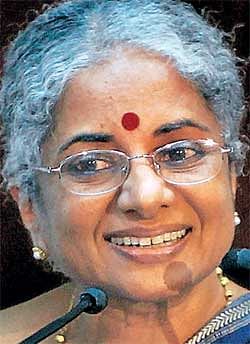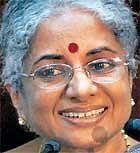
"Yes, we have allowed that...it (base rate) will start from July 1...all concerns of banks (regarding the implementation of the base rate model) have been addressed," RBI Deputy Governor Usha Thorat told reporters here after a meeting with the leading bankers.
The apex bank, in a circular last month, had asked banks to adopt the base rate model from April 1. RBI decided to replace the current benchmark prime lending rate system with the base rate to increase transparency in lending as many banks are lending at much lower rates than their benchmark lending rates to new customers. However, with the base rate lending regime, no bank can lend below this rate to anyone.
Significantly, Thorat indicated that banks are unlikely to be given any exemption on short-term loans (allowing them to lend below the base rate to corporate clients) in the base rate model, saying "basically, the principles we have articulated (on lending) will remain the same."
Talking to reporters after the meeting with the RBI, Indian Banks Association chairman and Union Bank chairman MV Nair said the apex bank has agreed to exempt three categories of loans-- staff loans, loans against fixed deposits and loans under the differential rate of interest scheme-- from the base rate's ambit.
Besides the three categories of loans exempted from base rate ambit, the central bank may also consider exemption of export credit from the base rate, Nair said."Staff loans, loans against fixed deposits and differential rate of interest loans have been exempted from the base rate. The RBI is yet to decide on export loans," IBA chairman Nair added.
The bank chiefs who met the RBI top brass today included SBI chairman OP Bhatt, Union Bank of India chairman and managing director MV Nair, Bank of Baroda chairman and managing director MD Mallya, Canara Bank chairman and managing director AC Mahajan and StanChart India head Neeraj Swaroop, amongst others.
The banking regulator was represented by its deputy governors--Usha Thorat, Shyamala Gopinath, KC Chakrabarty and Subir Gokarn.
The apex bank decided to restructure the existing BPLR model as it felt that there was no transparency in the way banks treated top corporate clients and common borrowers. Banks normally lend at much lower rates, as low as 5-6 per cent, to woo corporate borrowers while common borrowers pay a much higher rate.
The actual lending rates charged to borrowers would be the base rate plus borrower-specific charges, which will include product-specific operating costs, credit risk premium and tenor premium, said the draft RBI circular on base rate.
Recently, banks demanded an extension of the deadline owing to the huge task of segment-wise data collection to calculate the base rate besides aligning their existing clientele with the new system.
The base rate of each bank will be calculated on the basis of the cost of its deposits. Naturally, those banks, which have a higher cost of deposits will have a higher base rate. According to current indications, the base rate of most banks are likely to be in the range of 8.5-9.5 per cent.
Banks fear that given the new lending model, corporates will opt for other (non-bank) avenues to seek cheaper funding, which will primarily hit the business of small banks as a large chunk of their loans are to corporate clients.
